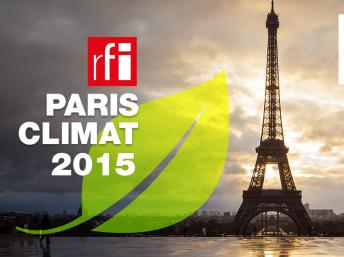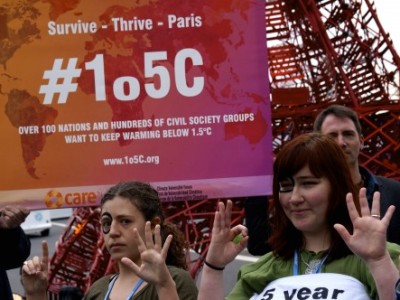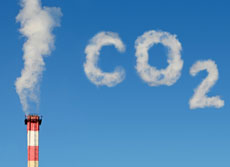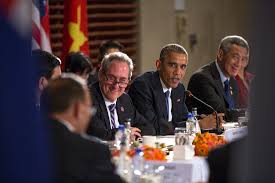Thoughts on the Accomplishments of the Paris COP
Climate Change is a Super-Wicked Problem that We're Beginning to Solve
As the 21st Conference of the Parties comes to a close in Paris, much ink will be spilled analyzing the historic agreement that 195 countries have now reached. Some of that commentary will, undoubtedly, be cynical. The agreement is not in the form of a traditional treaty requiring country ratification. The country commitments to reduce greenhouse gases are too weak. The commitments are only voluntary, with no penalty for failing to meet them. The aspirational goals to li...
CONTINUE READINGCOP 21 Battle over 1.5 Degree Global Target
The Contradictory Impulses in the Global Climate Negotiations
The Paris Conference of the Parties (COP) 21 negotiations are, not surprisingly, coming down to the wire with a number of contentious issues still unresolved. One issue that has surprised, impressed and puzzled me is the debate about whether the agreement should incorporate a goal that the global community work to limit temperature increases to 1.5 C by the end of the century rather than 2.0 C. France has circulated language in the latest text committing the parties...
CONTINUE READINGA Moveable Climate Feast?
Paris and the future politics of climate change
Back in 1920s Paris, an unknown writer named Ernest Hemingway hung out in the local cafes with other aspiring artists. It was an odd group, featuring communists like Pablo Picasso, fascists like Ezra Pound, and right-wingers like Gertrude Stein. But they helped each other, promoting their work and ultimately producing a generation of famous artists captured in Hemingway's posthumous memoirs A Moveable Feast. I now wonder if the Paris climate talks may serve a simil...
CONTINUE READINGGuest Blogger Kate Konschnik: The Debate about EPA’s Authority to Regulate Carbon Pollution is a Lot of Things – But Not These Things
Kate Konschnik is the Director of Harvard Law School’s Environmental Policy Initiative. The views expressed in this blog post are her own.
Clean Power Plan challengers have asked the D.C. Circuit to stay the rule pending litigation. Today, industry and environmental groups supporting EPA will file their oppositions to this request. The stay motions included the charge that EPA may not use Section 111(d) at all to curb pollution from existing power plants. Dan Farber and I have written about what this argument is, in previous Legal Planet blogs. But as the next round of legal arguments begin to fly, ...
CONTINUE READINGShould the Court Stay the Clean Power Plan?
Opponents need to prove four things to get a stay. They may be unable to prove any of those.
Opponents of EPA's landmark climate rule, the Clean Power Plan (a/k/a 111(d) regulation), are seeking to stay the effectiveness of the rule. A stay is a variety of preliminary injunction, and the Supreme Court laid down four requirements for such orders in Winter v. NRDC: "A plaintiff seeking a preliminary injunction must establish [1] that he is likely to succeed on the merits, [2] that he is likely to suffer irreparable harm in the absence of preliminary relief,...
CONTINUE READINGThe Uneasy Case for NIMBYism
A Growing Class Conflict Lurks Underneath the Land Use Debate
Paul Krugman is turning his attention to housing affordability, and the results as usual are salutary. When discussing the skyrocketing cost of housing in New York City, he observes: There’s still room to build, even in New York, especially upward. Yet while there is something of a building boom in the city, it’s far smaller than the soaring prices warrant, mainly because land use restrictions are in the way. And this is part of a broader national story. As J...
CONTINUE READINGWill the TPP Undermine Climate Policy?
The short answer: probably not much, maybe not at all
Representatives of U.S. environmental negotiations have shown up in Paris to campaign against the new TPP trade agreement. (here) They've also been actively engaged in discussions with Democratic law-makers, in an effort to block approval. A key objection is that the TPP will undermine climate policy. Jim Salzman had a great post last week on the TPP and the environment last week, but I want to focus a little more on the climate dimension and go into more depth on ...
CONTINUE READINGCalifornia-Led “Under 2 MOU” Agreement Gaining Steam In Paris
Subnationals commit to aggressive climate goals today at signing ceremony at U.S. Ambassador's residence
What started as a series of informal conversations about a year ago among Governor Brown, his senior staff, and a few world leaders, has turned into a veritable global movement. The "Under 2 MOU," which I blogged about on Thursday, just bumped its total from 57 signatories last week to 80 today, with each representing a city, state or region around the world that is pledging to limit global warming to under 2 degrees by 2100. That signatory number is expected to incr...
CONTINUE READINGHow are negotiators building text at the climate talks?
Paris, the micro view
Ted has been posting on the proceedings at the Paris climate conference, explaining some of the central conflicts playing out here and the often-counterproductive processes being employed. He’s given the talks an appropriately large context, stretching all the way back to Charles Lindbergh’s landing at Le Bourget. I hope to complement his posts with a more micro view. What has been happening in the drafting rooms, word by word and phrase by phrase? How is the...
CONTINUE READINGParis COP update, Paris COP in context
The climate meetings in in Paris have descended into the usual maelstrom of intensive negotiations in long long days in many parallel meetings. I noted in my post the other day that there is a feeling of higher-than-usual stakes for this meeting. This was highlighted by the visit to negotiators last night by French Foreign Minister Laurent Fabius, who reminded negotiators that he wants them to produce “clean text” by Saturday, to deliver to Ministers when they take o...
CONTINUE READING












